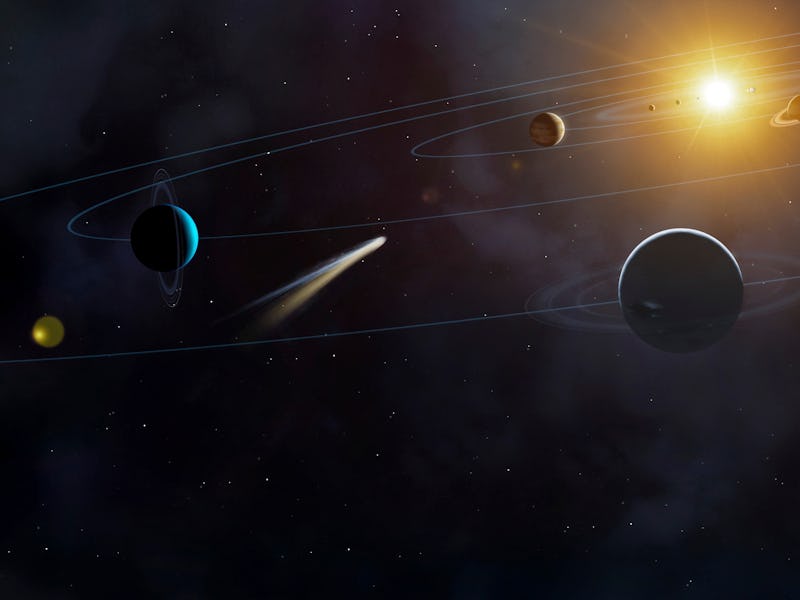This 'stalker' spacecraft could help us understand how life began on Earth
A cosmic game of mousetrap will soon get under way.

Comets are essentially dirty cosmic snowballs. These icy objects form from the same material that formed the Solar System more than four billion years ago, and may even have delivered the organic material which sparked life on Earth.
Dirty snowballs or not, comets are an integral piece of the puzzle when it comes to understanding our own origin story. That's why European scientists are sending a craft into space to stalk a comet. But rather than hunt down the space rock, this spacecraft will lay low until its prey comes to it.
What's new — In June 2019, the European Space Agency (ESA) chose the Comet Interceptor mission to study these icy space rocks in unprecedented detail. More than a year later, the idea is coming to fruition: On Monday, European aerospace manufacturer Thales Alenia Space announced they will begin designing the mothership fit for this mission.
Why it matters — Comets are icy bodies of frozen gas, rock and dust — material that likely dates back to the formation of the Solar System.
Comets are made up of the same material that makes up the Solar System, and therefore hold clues to how our planet originated.
Scientists believe comets come from a disc-like belt of rocks beyond Neptune, where they orbit the Sun in the realm of Pluto. Some comets are pushed closer to the Sun due to the star's gravitational tug, and those are known as short-period comets.
So far, astronomers have only been able to observe short-period comets orbiting the Sun at a close distance. But by the time they get into this range, their material has already been altered by the Sun's heat.
The heat causes comets' ice to change to gas, a process giving comets the familiar tail of dust and gas extending thousands of kilometers behind them. By the time astronomers have spotted a comet, it is already too late to send out a spacecraft to observe it up close.
To overcome this observational hurdle, space agencies need to find a pristine comet to study, one that has not yet been affected by the Sun's radiation.
Humans have been fascinated by comets and what they can tell us about our own lives for millennia.
The big idea — The Comet Interceptor mission consists of a large spacecraft and two small, robotic probes.
After the spacecraft launches into space, it will be set to a "parking" orbit, essentially waiting patiently in the depths of space until scientists identify a suitable comet for it to target.
After a target is identified, the spacecraft will be sent out on an intercept course, following the comet at a distance. The mothership will then deploy the two probes, which will travel closer to the comet and gather data and observations from up close.
These data will then be used to map the comet in 3D.
An artist's concept of the Comet Interceptor mission.
What this means for the future — The main purpose of the probes will be to measure the chemical composition of the comet in order to try and figure out whether comets may have brought water and other organic material to Earth. Ultimately, it could answer the question: Are comets and asteroids responsible for life taking root on our planet?
The scientists behind the mission will likely pick a comet from the Oort Cloud, a theoretical cloud of small icy objects that surround the Sun at a distance up to 3.2 light years away. The cloud was formed around the same time as the Solar System, but was later ejected to its outermost boundaries.
"We all look forward to supporting this exciting and unprecedented scientific mission to uncover more information about the origins of our Universe," Andrew Stanniland, CEO of Thales Alenia Space in the U.K. said in a statement.
But we will need to wait for the results from this unusual mission. The Comet Interceptor is set to launch in the year 2028, so watch this space.